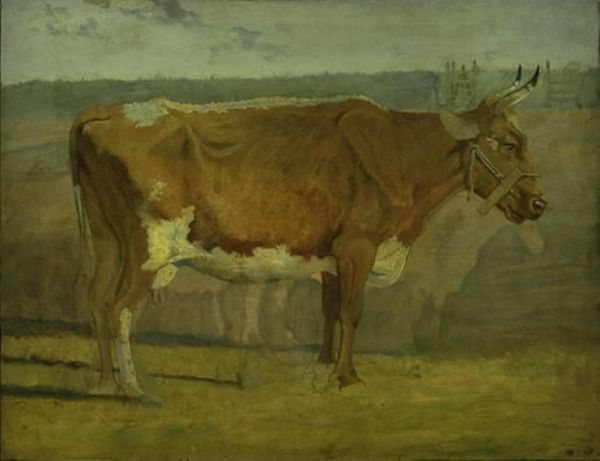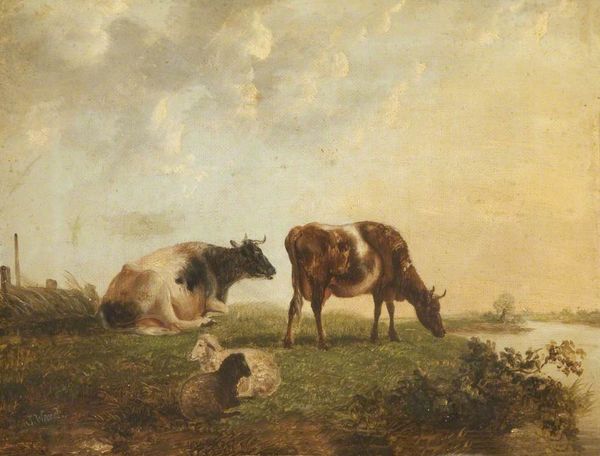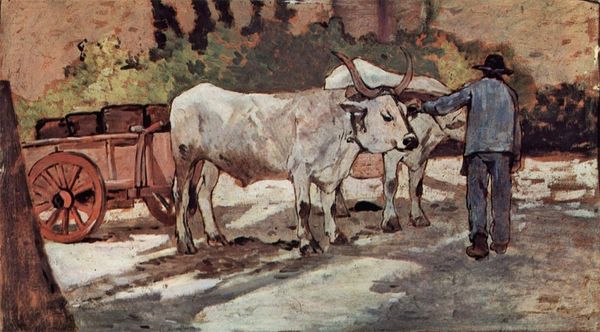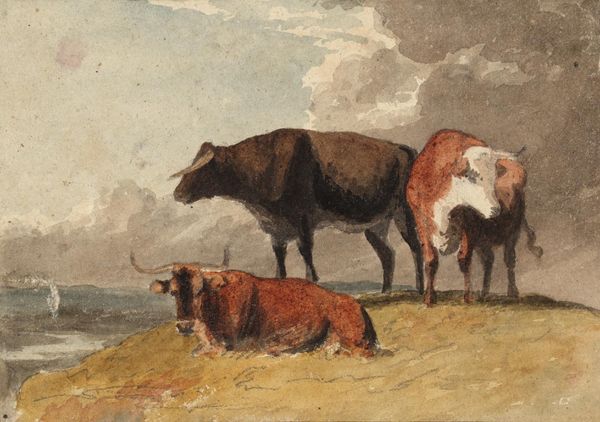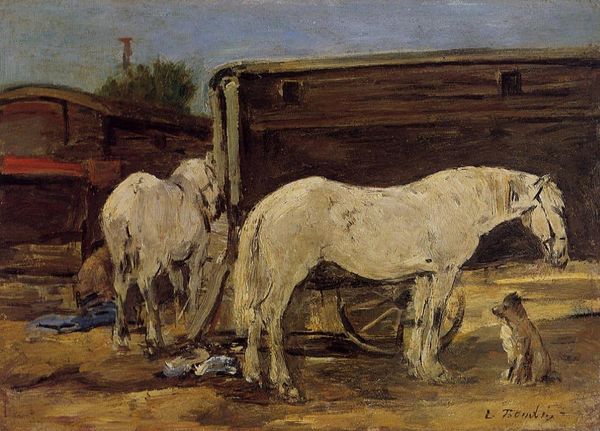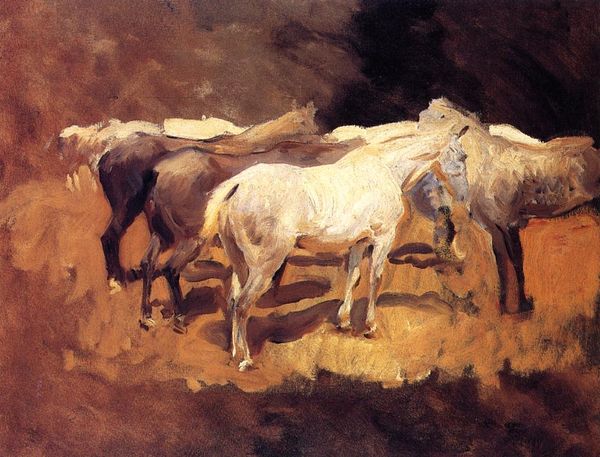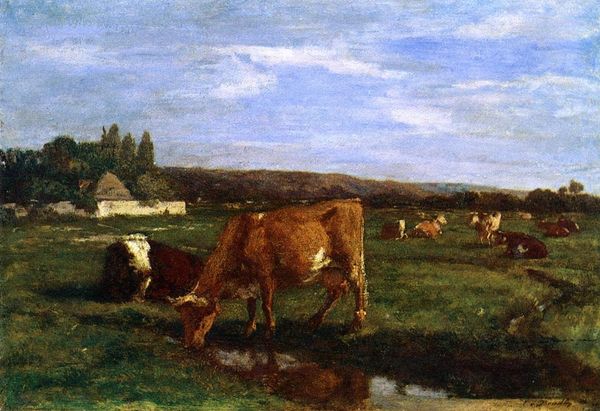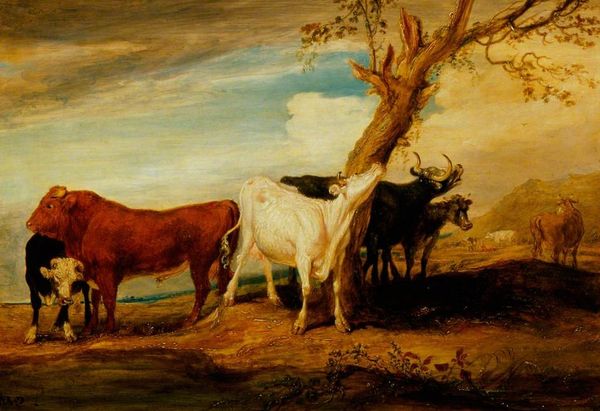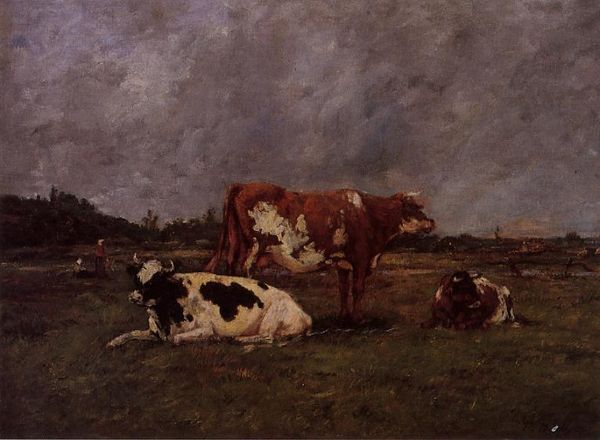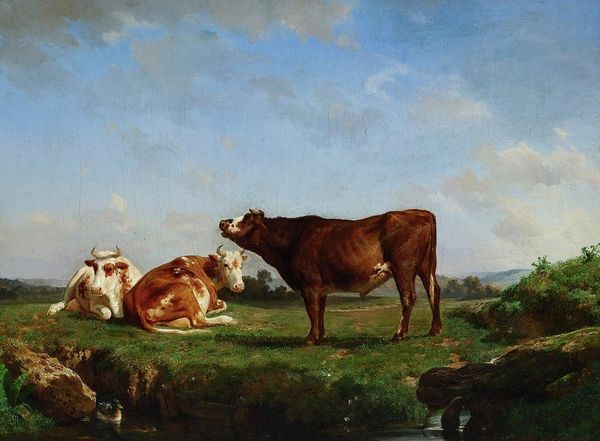
painting, oil-paint
#
animal
#
painting
#
impressionism
#
oil-paint
#
landscape
#
charcoal drawing
#
oil painting
#
realism
Copyright: Public domain
Editor: This is "Two Bulls Wearing a Yoke," painted by Henri de Toulouse-Lautrec around 1881. It's an oil painting, and I find it unexpectedly pastoral for Lautrec; almost dreamlike, definitely not what I typically associate with him. What strikes you about this piece? Curator: Oh, isn't it intriguing? Lautrec, the chronicler of Parisian nightlife, turning his eye to something so… bovine! It's almost a whisper compared to his usual shout. The soft palette, the blurry edges—it’s as if he’s painting a memory rather than a scene. I wonder, does that yolk connect the two animals in a supportive way or more of a constraint? What does it remind you of? Editor: That's a good point about the yolk, maybe something of a paradox? It feels less critical of societal constraints than, say, Daumier. Perhaps more interested in the way labor, in general, structures existence? Curator: Indeed! He captures a raw truth of labor. It's as honest and straightforward as the animals themselves, nothing glamourized, nothing sugar-coated, or made picturesque. Don’t you think, it's like peeking into a quieter, almost meditative side of the artist? Editor: I do now! It highlights that there is much more to his art than only Parisian scenes and really shows that Lautrec can be unexpectedly reflective. I appreciate seeing this other side of him. Curator: Me too! I find it wonderfully revealing. Like discovering your favorite rockstar also secretly plays the flute—unexpected and delightful.
Comments
No comments
Be the first to comment and join the conversation on the ultimate creative platform.
